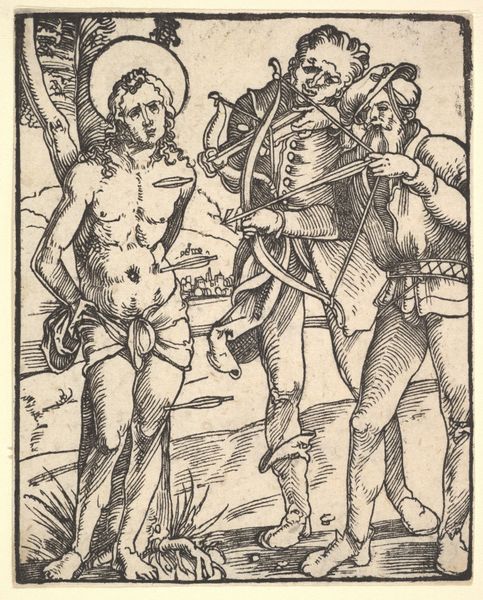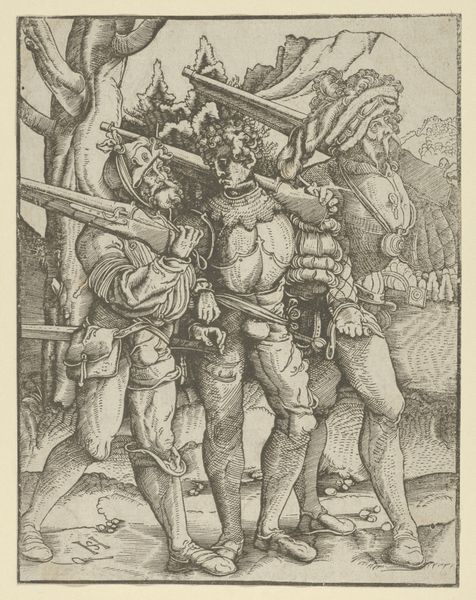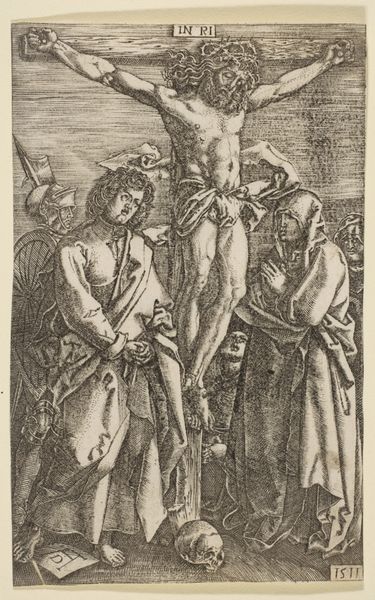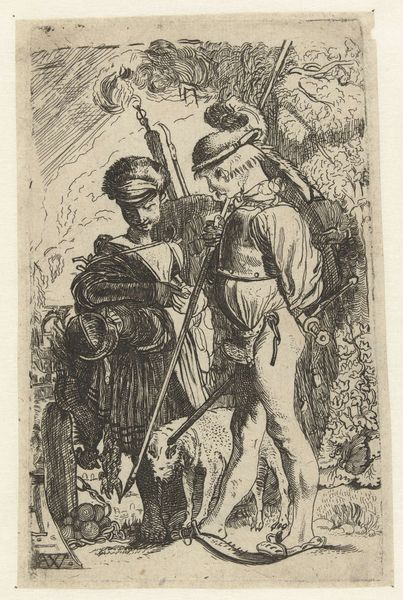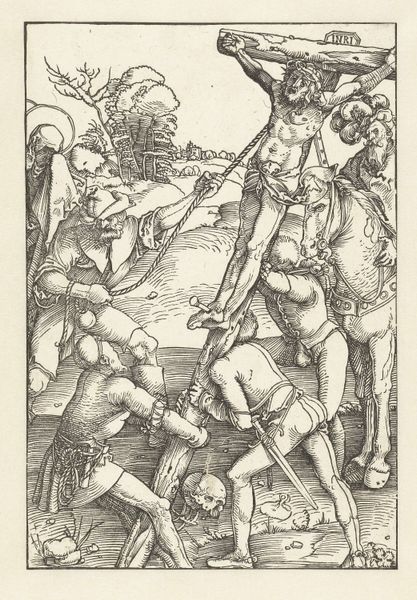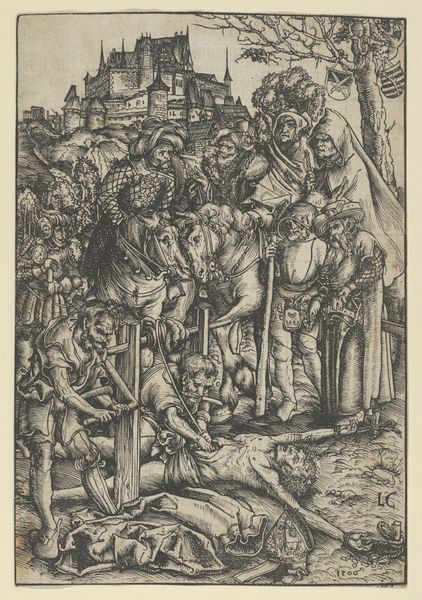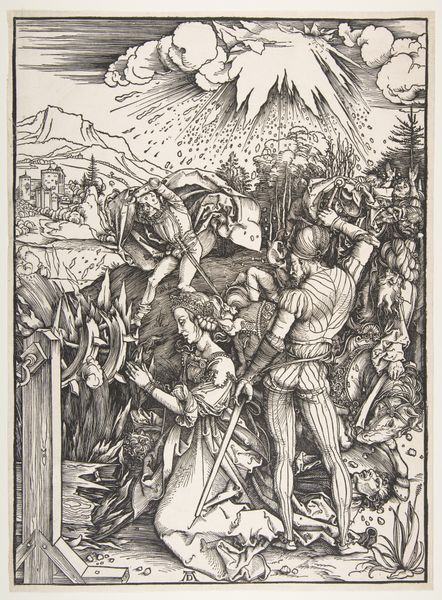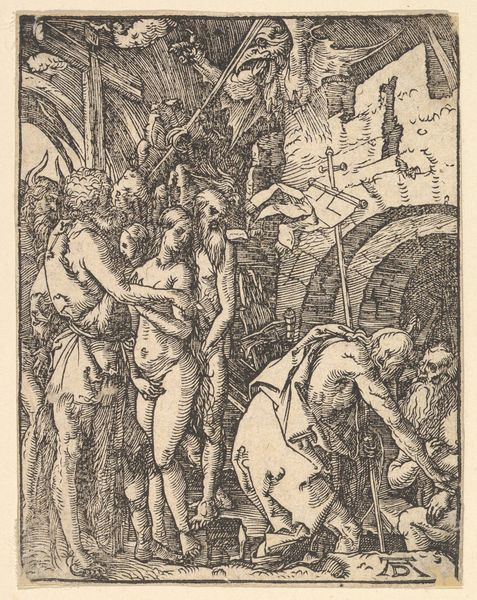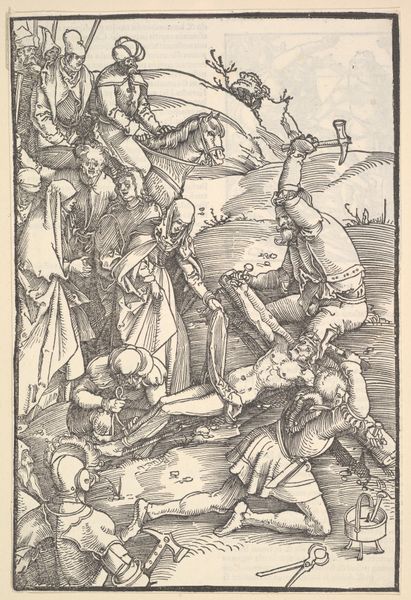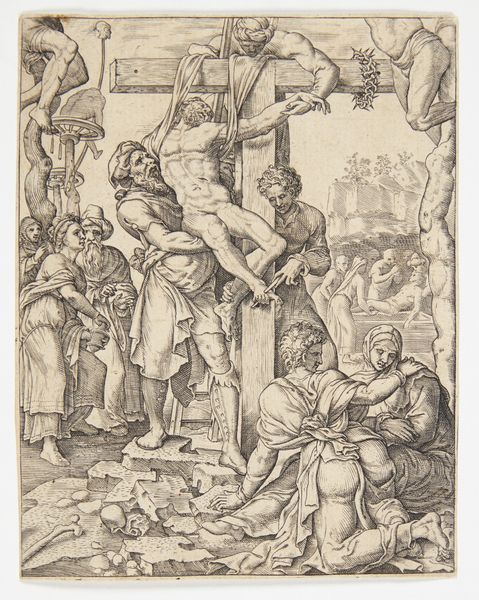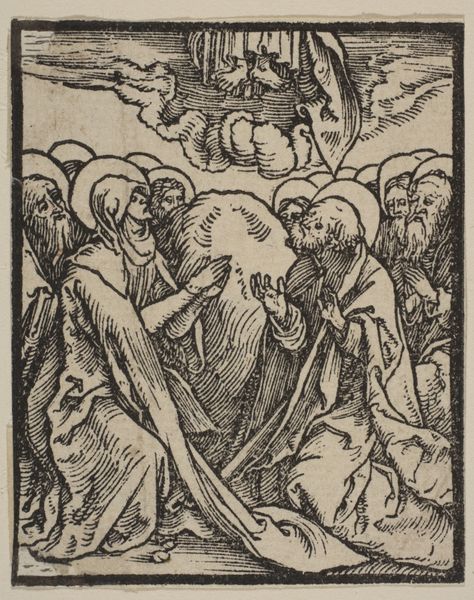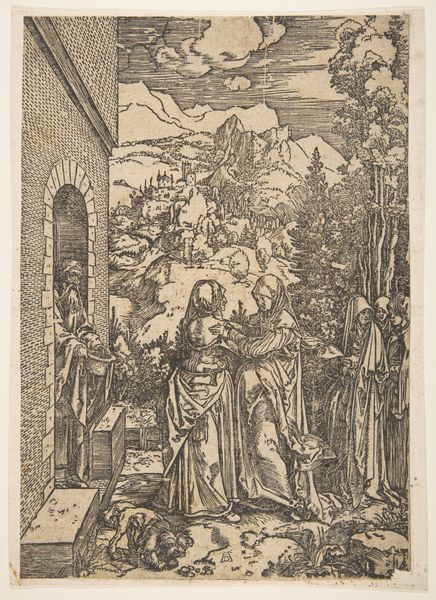
drawing, print, ink, engraving
#
drawing
# print
#
figuration
#
11_renaissance
#
ink
#
history-painting
#
northern-renaissance
#
engraving
Dimensions: height 126 mm, width 102 mm
Copyright: Rijks Museum: Open Domain
Curator: Up next is Albrecht Durer’s, “Sebastiaan wordt beschoten met pijlen door beulen”, made sometime between 1505 and 1509. It's an engraving, printed in ink, and part of the Rijksmuseum collection. The northern Renaissance really knew how to bring the drama, didn’t they? Editor: Immediately, the level of detail stuns me— especially considering it's a print! There's something deeply unsettling in the precision, as if the crisp lines intensify the cruelty of the scene. The pale, almost ethereal body of Sebastian contrasting against the heavily crosshatched, bulky executioners creates an incredibly stark emotional dissonance, don’t you think? Curator: Absolutely. The contrast speaks to the means of production, though. The stark lines come from the process of engraving, where the artist is directly manipulating metal to create the image, a very physical and labor-intensive process that informs the visual impact. We see here how artistic skill and the capabilities of the materials intertwine, affecting our viewing experience, especially considering its likely wide distribution as a print. Editor: I'm fascinated by how Durer makes this a history painting, a rendering of a specific moment but layered with emotion and personal vision. To think of this being distributed makes me wonder how its audience received it then. The composition places St. Sebastian just left of center, emphasizing his vulnerability, while the almost cartoonish grimaces of the executioners add this layer of uncomfortable... what? Almost absurdity? Curator: It hints at a changing socio-political environment too. These prints often circulated amongst the burgeoning merchant class who sought accessible art. So, while Durer uses the religious imagery and themes, he is simultaneously participating in an early form of mass production, allowing a broader engagement with religious and historical narratives beyond the church and aristocracy. Editor: Interesting. I’m struck by how this engraving offers this powerful blend of religious storytelling, the impact of reproducible art, and the raw emotional power embedded in each stroke. Curator: Indeed, the work leaves us to consider not only the artist’s hand and materials, but how this kind of print culture shaped early modern Europe.
Comments
No comments
Be the first to comment and join the conversation on the ultimate creative platform.
